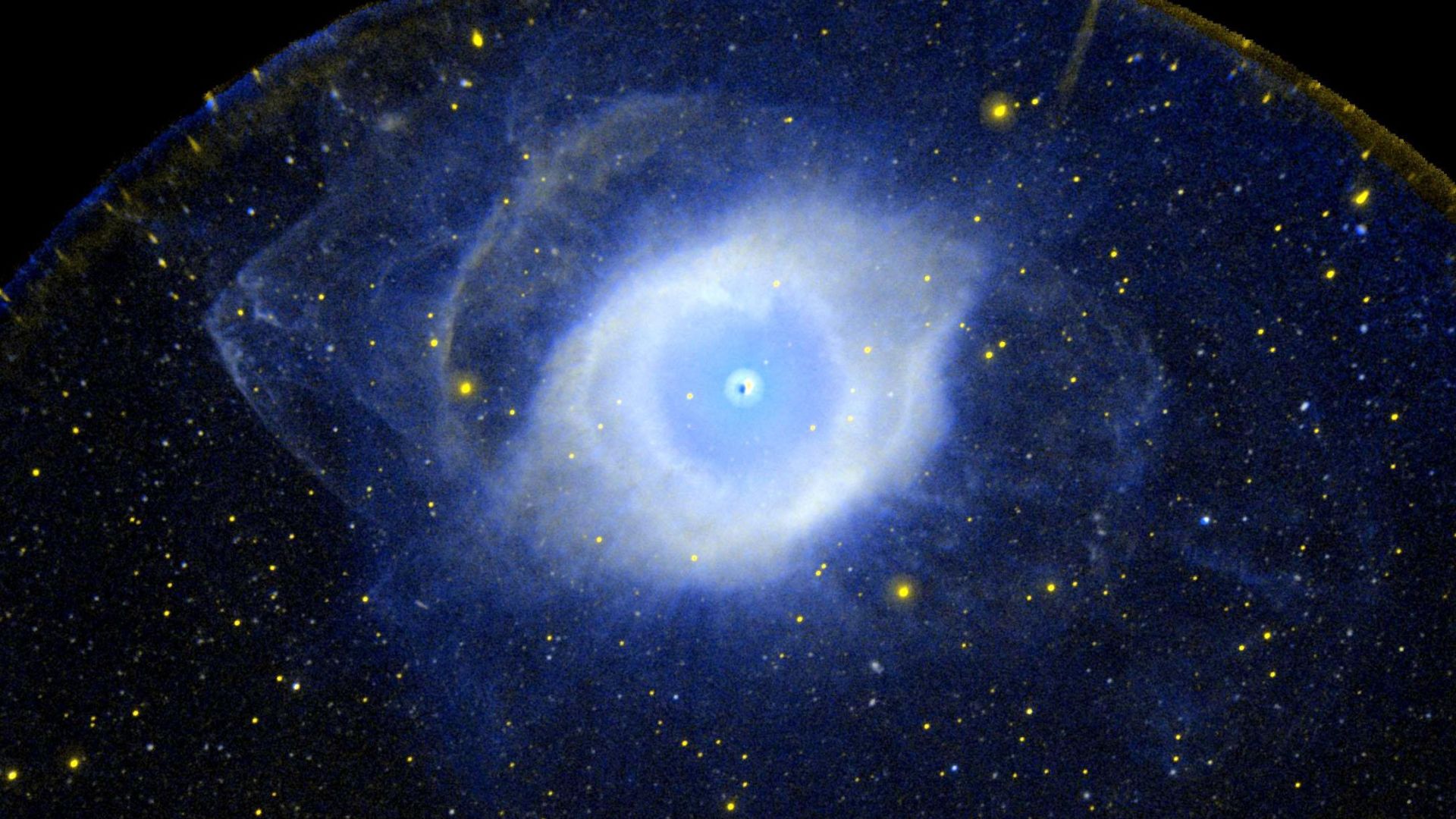
The expansion of the universe could be a mirage, a potentially controversial new study suggests.
This rethinking of the cosmos also suggests solutions for the puzzles of dark energy and dark matter, which scientists believe account for around 95% of the total energy and matter in the universe but remain shrouded in mystery.
The novel new approach is detailed in a paper published June 2 in the journal Classical and Quantum Gravity, by University of Geneva professor of theoretical physics Lucas Lombriser.
Related: Our expanding universe: Age, history & other facts
Scientists know the universe is expanding because of redshift, the stretching of light's wavelength towards the redder end of the spectrum as the object emitting it moves away from us. Distant galaxies have a higher redshift than those nearer to us, suggesting those galaxies are moving ever further from Earth.
More recently, scientists have found evidence that the universe's expansion isn't fixed, but is actually accelerating faster and faster. This accelerating expansion is captured by a term known as the cosmological constant, or lambda.
The cosmological constant has been a headache for cosmologists because predictions of its value made by particle physics differ from actual observations by 120 orders of magnitude. The cosmological constant has therefore been described as "the worst prediction in the history of physics."
Cosmologists often try to resolve the discrepancy between the different values of lambda by proposing new particles or physical forces but Lombriser tackles it by reconceptualizing what's already there.
"In this work, we put on a new pair of glasses to look at the cosmos and its unsolved puzzles by performing a mathematical transformation of the physical laws that govern it," Lombriser told Live Science via email.
In Lombriser's mathematical interpretation, the universe isn't expanding but is flat and static, as Einstein once believed. The effects we observe that point to expansion are instead explained by the evolution of the masses of particles — such as protons and electrons — over time.
In this picture, these particles arise from a field that permeates space-time. The cosmological constant is set by the field's mass and because this field fluctuates, the masses of the particles it gives birth to also fluctuate. The cosmological constant still varies with time, but in this model that variation is due to changing particle mass over time, not the expansion of the universe.
In the model, these field fluctuations result in larger redshifts for distant galaxy clusters than traditional cosmological models predict. And so, the cosmological constant remains true to the model's predictions.
"I was surprised that the cosmological constant problem simply seems to disappear in this new perspective on the cosmos," Lombriser said.
A recipe for the dark universe
Lombriser's new framework also tackles some of cosmology's other pressing problems, including the nature of dark matter. This invisible material outnumbers ordinary matter particles by a ratio of 5 to 1, but remains mysterious because it doesn't interact with light.
Lombriser suggested that fluctuations in the field could also behave like a so-called axion field, with axions being hypothetical particles that are one of the suggested candidates for dark matter.
These fluctuations could also do away with dark energy, the hypothetical force stretching the fabric of space and thus driving galaxies apart faster and faster. In this model, the effect of dark energy, according to Lombriser, would be explained by particle masses taking a different evolutionary path at later times in the universe.
In this picture "there is, in principle, no need for dark energy," Lombriser added.
Post-doctoral researcher at the Universidad ECCI, Bogotá, Colombia, Luz Ángela García, was impressed with Lombriser's new interpretation and how many problems it resolves.
"The paper is pretty interesting, and it provides an unusual outcome for multiple problems in cosmology," García, who was not involved in the research, told Live Science. "The theory provides an outlet for the current tensions in cosmology."
However, García urged caution in assessing the paper's findings, saying it contains elements in its theoretical model that likely can't be tested observationally, at least in the near future.
Originally published on LiveScience.com.







